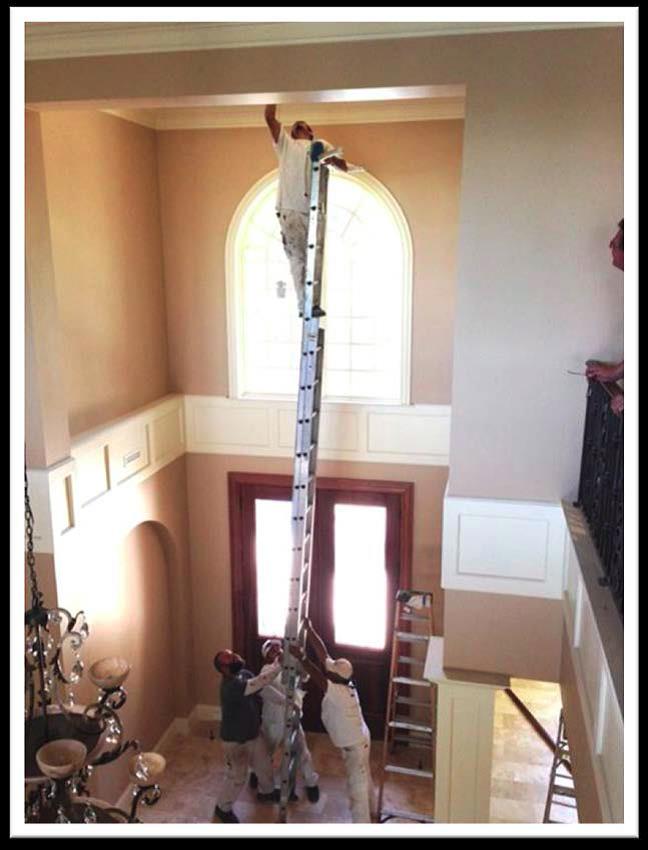
What would happen if just one of the workers holding up this extension ladder lost his grip or stumbled’

If workers can’t reach an area where they need to, say, paint, using a ladder to get access to that area makes sense’in most cases. But ladders can’t always safely reach certain areas. And trying to use a ladder anyway in such situations can put workers in grave danger.
This picture from the US Naval Safety Center is a good example. True, the cathedral ceiling the worker needs to paint isn’t easy to reach. But trying to do so with an extension ladder being held in place by three co-workers was a bad decision. Although setting up a scaffold would’ve taken more work and time, it would’ve been a much safer choice.
Adding to the hazards, if the worker should fall from this precarious position, he’s not wearing any type of fall prevention equipment to protect himself.
Keep Workers Safe on Ladders
To keep workers safe when they use extension and step ladders on the job, ensure that your workplace complies with the requirements for portable ladders in the OHS laws. And train workers on ladder safety to ensure that they understand:
- Step and extension ladders aren’t interchangeable
- How to use step ladders and extension ladders safely
- How to inspect ladders to ensure that they’re not damaged, broken or otherwise unsafe
- Not to use metal ladders near power lines.
Ensure Safe Use of Scaffolds
Although using a scaffold in these circumstances would be safer, scaffolds can also endanger workers if they’re not used properly. So to ensure that you comply with the scaffold requirements in your jurisdiction’s OHS laws, do the following:
- Determine if a scaffold is required;
- Select the appropriate type of scaffold, such as a bracket scaffold, single’pole scaffold or rolling scaffold;
- Ensure the selected scaffold is properly designed and constructed. In some cases, you may need to have it designed by a professional engineer;
- Ensure the scaffold can carry the load or weight expected to be placed on it by workers, tools, materials and other equipment;
- Safely locate the scaffold, such as by placing it on flat, level ground and away from overhead power lines;
- Inspect the scaffold before workers use it (An engineer or someone considered a ‘competent’ person can do so using this inspection checklist.); and
- Set safe work practices, including requiring workers to wear proper fall protection while on a scaffold and when required by your OHS regulations.
